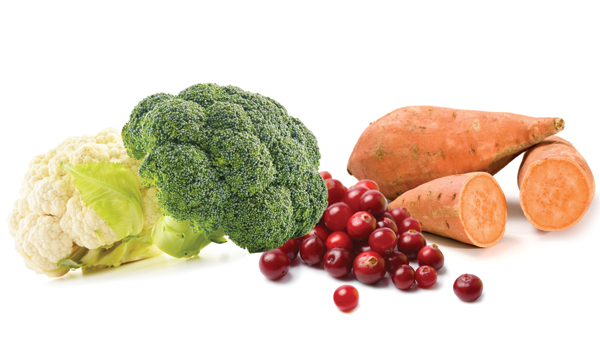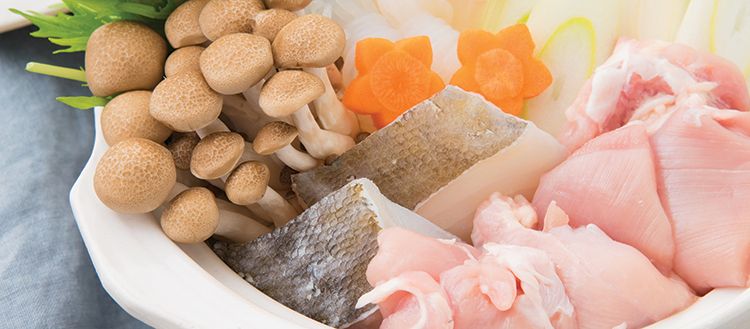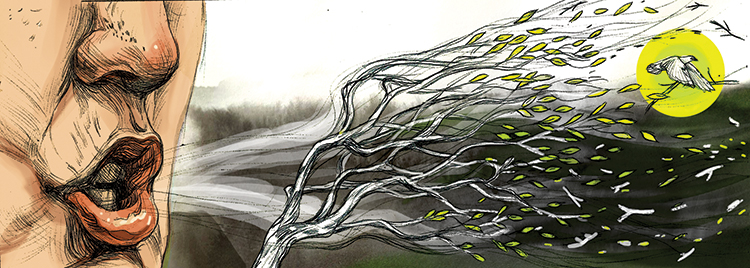by Peggy Paul Casella
Broccoli & Cauliflower
Both members of the Brassica oleracea or flowering cabbage family, broccoli and cauliflower share many of the same attributes and nutritional properties. They are low in calories, high in vitamin C, good sources of folate, fiber and vitamin A, and they contain phytochemicals that can help protect eyesight and prevent cancer. Look for them in a range of colors and varieties. This time of year, you can find: regular green, looser “sprouted,” and deep purple broccoli, as well as regular white, yellow, and purple cauliflower.
Uses: Pickle them. Serve raw with dip. Cut into florets and roast with garlic and other vegetables. Add to stir-fries, casseroles, frittatas, soups and stews. Steam for use in salads and side dishes. Smother with cheese sauce. Cook and blend with feta, sautéed onion and garlic, olive oil, salt and pepper and toss with pasta or grains. Boil and mash with flour, eggs, mustard and garlic to make fritters.
Cranberries
These tart, North American natives are one of the most versatile fruits around. Closely related to blueberries, lingonberries and huckleberries, cranberries are exceptionally high in vitamin C and other antioxidants. They grow on trailing evergreen shrubs, preferring well-irrigated, loamy soil found in places like bogs. Fun fact: Cranberries are actually white when they reach full ripeness. The red hue you know and love develops a few weeks later along with subtle changes to the pectin and sugar contents.
Uses: Juice them. Candy them. Pickle them. Purée into smoothies. Cook down into jellies, jams and sauces. Bake into cakes, cookies and scones. Roast with olive oil and thyme. Add to stuffings and bread puddings. Mince with sugar, cucumber, cilantro, onion, jalapeño, lime juice and salt for a new take on salsa. Stir into oatmeal and pancake or waffle batter. Muddle for use in cocktails and punches.
Sweet Potatoes
Hailing from South America, sweet potatoes belong to the morning glory family and are not actually related to potatoes at all. Likewise, though they are often used interchangeably, sweet potatoes and yams are completely different vegetables. There are numerous varieties of sweet potatoes, with flesh ranging from creamy white and yellow to orange, magenta and deep purple. Not only do they contain fewer calories and carbs—and more vitamins, minerals and fiber—than white potatoes, but they are also way more adaptable to different culinary applications.
Uses: Bake and roast them. Make oven fries. Dice along with peppers, onions, and tomatoes for breakfast hash. Shred to make latkes. Boil and mash for smoothies, baked goods, pancakes, spreads and as a topping for shepherd’s pie. Add to soups, stews, chilies, curries and casseroles. Cook and toss with quinoa or lentils for a hearty vegetarian main course.









